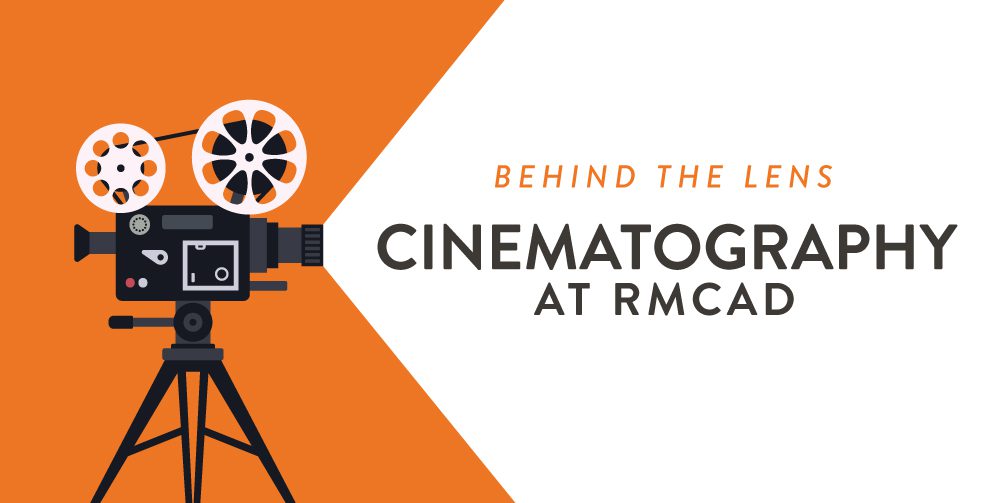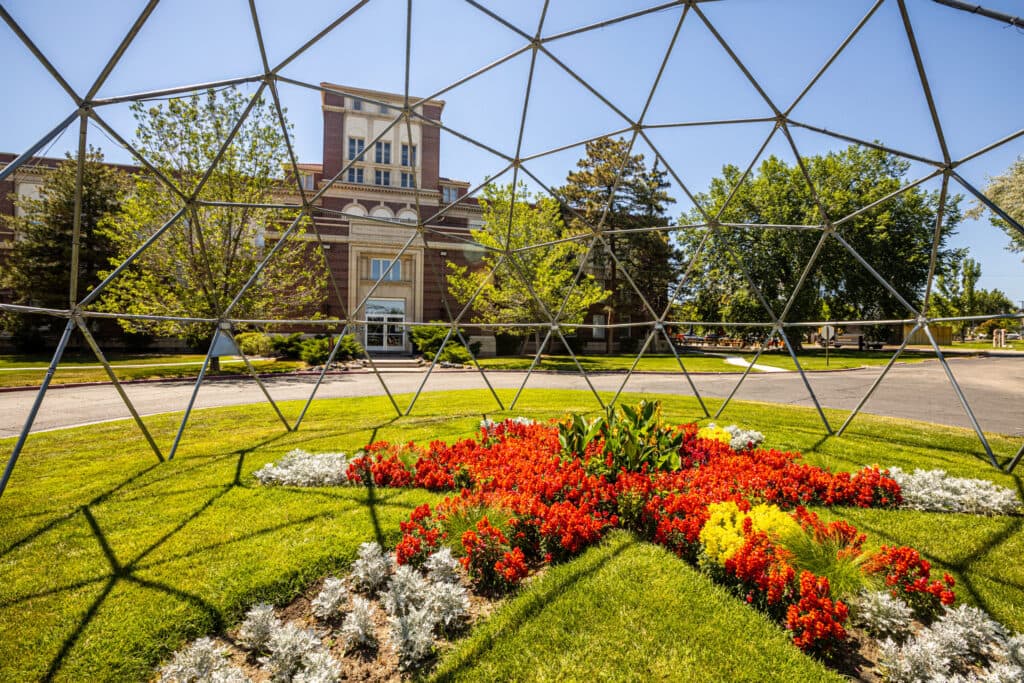Movement, light and shadows – oh my! Cinematography is the art of combining all of this and more into a thoughtful composition to convey emotion and add narrative. At RMCAD, we believe a video camera all by itself doesn’t make a great story, any more than a typewriter can make a great novel. It’s about the artist behind the lens!
We are proud to help build visual storytellers by providing them the tools to not only perfect their technical skills but also gain knowledge on how to start their own successful careers and businesses. Read more about the background and creative opportunities in cinematography from Jim Reiman, RMCAD’s Chair of Graphic Design and Photography.
How is cinematography introduced in RMCAD’s photography curriculum?
Cinematography is a key part of RMCAD’s photography curriculum. All photography students are required to take Cinematography I and II, where they learn the art of cinematography and time-based narrative storytelling. Students also learn further video techniques in Survey of Photography, Advanced Portraiture, Advanced Digital Post Production and several other courses. In the latter class, students can combine video and stills to create an animated photograph, also known as a cinemagraph. The popular technique is used in both social media advertising and NFTs. With video content only continuing to flourish, more video-based projects are being added to the photography program. In addition, RMCAD’s upper level classes provide students the opportunity to explore cinematography even more in business branding and marketing and through their portfolio work.
What are the main differences and similarities between photography and cinematography?
The similarities between photography and cinematography have a lot to do with the understanding of composition, light, manual camera settings and narrative sequencing. All of these apply to both still and motion-based photography. The big difference between them has to do with the application of movement and audio within a shot. This movement could be illustrated by the literal movement of the subject within the frame or the movement of the camera itself. When it comes to audio, this can be recorded on location or added later. Movement and audio bring an extra dose of life to a piece that is very different from a still photograph.
What is the history behind cinematography? What does the future look like?
The evolution of technology substantially opened the doors to film high-end videos, specifically in the mid-2000s, when Digital Single Lens Reflex (DSLR) manufacturers started incorporating HD video features into their cameras. Prior to this, cinematography was a very expensive industry to enter. However, with every new wave of DSLR and mirrorless cameras, the ability to shoot professional quality UHD video is more accessible than ever. In addition, videographers have the ability to achieve dynamic shots through the use of drones, instead of pricey helicopter rentals. With these technological advancements and the commercial industry and social media fully embracing video content, cinematography is only growing and the need for artists to previsualize and produce high quality video is on the rise.
What career paths can you take with cinematography?
The ability to shoot and edit video gives photographers another remarkable tool to use and apply in their craft and business. Video is in high demand across several photographic genres, including commercial advertising, documentary, photojournalism and even the wedding industry – just to name a few. In the same way everyone needs photography in our increasingly screen-based culture, they also need video.
What advice would you give to a student considering a career in cinematography?
A strong understanding of light, lens and composition is crucial in the field, also called visual communication. Be sure to spend time studying how to manipulate camera settings and lighting, as well as learning how to edit video. To perfect your skills, study scenes in recent films and commercials, and ask yourself: How are the clips cut together to tell a story? How are the cuts timed with audio and motion? Absorb and digest all the information and then begin applying it to your own work.
If you are interested in learning more about RMCAD’s Bachelor of Fine Arts in Photography, offered online or on campus, please visit the academics page or fill out a request information form.

